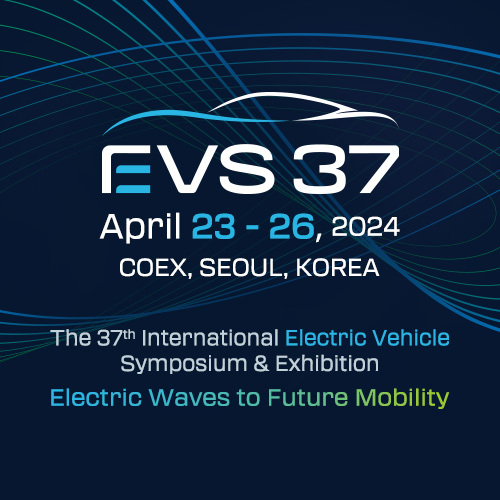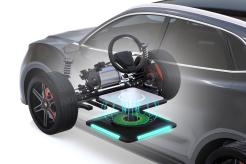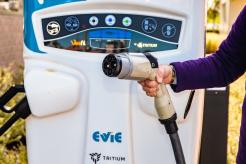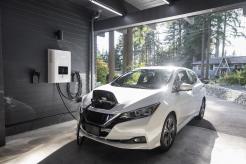Electric vehicles (EVs) are critical to reducing greenhouse gas emissions (GHG) that contribute to climate change. With internal-combustion passenger cars contributing about 60 percent of the carbon pollution the transportation sector creates, EVs are essential to a clean energy future.
But EVs are more important to our world than just that. Here are eight essential facts about the EV industry that you may not know.
1. Four EVs are currently available to the passenger market: HEVs, PHEVs, BEVs, and FCEVs.

(Image source: Unsplash)
Conventional Hybrid Vehicles (HEVs) have an electric propulsion system drivetrain (transmission, driveshaft, axles, and wheels) coupled with a gasoline-powered engine. Although cars are the most common type, hybrid systems exist in pickups, buses, boats, tractors, and even aircraft. Examples include the Toyota Prius, Peugeot 508 RXH HYbrid4, and Ford Fusion Hybrid.
Plug-in Hybrid Electric Vehicles (PHEVs) have internal combustion, gasoline-powered engines, and an electric motor. They act like regular hybrids using 100% electric power until reaching their maximum range when they switch to gasoline power. PHEV batteries can recharge from the grid at an EV charging station. Examples include the Toyota RAV4, Mitsubishi Outlander PHEV, and Ford Escape.
Battery Electric Vehicles (BEVs or just EVs) are the original 100% pure electric cars. They have no gasoline or internal combustion engines and no tailpipe emissions. All energy is stored in the battery and recharged by plugging it into a charging station or outlet. Examples include the Cadillac Lyriq, Hyundai Kona, and Tesla Model 3.
Fuel Cell Electric Vehicles (FCEVs) use a fuel cell to power an onboard electric motor. FCEVs are generally less efficient than BEVs. Since they emit only heat and water, they are classified as zero-emissions, although FCEVs can create hydrogen-related pollutants. Currently, the Toyota Mirai and the Hyundai Nexo are the only two passenger models of FCEVs made for public use.
Learn more about the types of Electric Vehicles.
2. No matter where the electricity comes from, EVs have a smaller carbon footprint than gasoline-powered vehicles.

(Image source: Unsplash)
Battery electric and plug-in hybrid EVs are charged and fueled from power grids. Although some grids get their energy from clean, renewable sources, many still rely on fossil fuels.
However, regardless of the grid source, an EV converts electricity so efficiently that it is a cleaner and less costly use of that power than other alternatives. Fueling an EV on the grid creates lower greenhouse gas emissions than internal-combustion cars.
Want to know how much carbon pollution you could save by switching to an EV? The Union of Concerned Scientists (UCS) offers an online tool. Just enter your zip code and an EV make and model.
3. EVs require more emissions to manufacture than gasoline vehicles, but they more than make up the difference once they’re on the road.

(Image source: Unsplash)
Because of their large lithium-ion batteries, EVs produce more global warming emissions while being manufactured than the average gasoline-powered vehicle. The average mid-sized EV with an 84-mile range creates about 15% more emissions in the manufacturing process.
After that, though, EVs make up for higher manufacturing emissions within 18 months – and continue reducing emissions compared to gasoline-powered cars for as long as they are driven. UCS estimates that the average EV has the same GHG emissions as an internal-combustion car getting 88 miles per gallon.
4. Due to the falling cost of Li-Ion batteries, EVs are becoming as cheap to manufacture as gas-powered cars.

(Image source: Unsplash)
Ten years ago, producing a Li-Ion battery (the type that powers EVs) cost about $1,100 per kWh. By 2023, the cost is expected to fall to $100 per kWh, making EVs as cheap to manufacture as gas-powered vehicles.
According to ARK Invest, the manufacturer’s suggested retail price (MSRP) of a 350-mile range EV by 2023 will be on par with that of a like-for-like Toyota Camry – and the cost is projected to drop by 53% between 2021-2025, making the EV model an estimated $8,000 cheaper than the Camry.
5. The number of public EV charging stations nationwide is expected to increase tenfold by 2030.
The U.S. currently boasts nearly 50,000 EV public charging stations. As a result of legislation passed in 2021, the U.S. Department of Transportation (DOT) and the U.S. Department of Energy (DOE) is investing at least $5 billion over the next five years to create a national EV charging network along 75,000 miles of the national highway system.
The goal is to have a standardized nationwide network of 500,000 EV charging stations by 2030 that are agnostic to location, vehicle brands, and EV charging companies. Approval and funding for this legislation’s first EV infrastructure deployment projects began in late September 2022.
6. Public transit buses are helping lead the way in the EV revolution.

(Image source: Unsplash)
More than 500 public transit bus systems operate daily in the U.S. Some systems, such as the Los Angeles Metro, have already invested in a whole fleet of zero-emissions electric buses. California has committed to a 100% electric transit bus fleet within the next 20 years. By 2040, every bus you ride on or wave to in California will be a clean electric bus.
7. EV trucks are just a little further behind.

(Image source: Unsplash)
Today, there are 70 different types of zero-emission trucks on the market. Communities across California successfully fought for the nation’s first electric truck manufacturing standard, requiring truck makers to sell a certain percentage of zero-emission trucks beginning in 2024. California’s rule will help jumpstart a transition to electric trucks in other states.
8. The EV industry creates American jobs.
The U.S. Energy and Employment Report estimated in 2019 that more than 250,000 American workers work in manufacturing, selling, repairing, and maintaining electric, hybrid, and hydrogen fuel-cell vehicles. The BlueGreen Alliance estimates that over 200 manufacturing facilities employ more than 69,000 U.S. workers building components and technology for hybrid and electric cars, SUVs, and pick-up trucks.
Final Thoughts
Estimates are that by 2030, EVs will represent nearly half (47%) of all vehicles sold in the U.S. annually.
ConsumerReports.org found in a 2022 survey that 14 percent of American drivers say they would “definitely” buy or lease an electric-only vehicle if they were to buy it today. That’s up markedly from the 4 percent who said the same in their 2020 survey.
Among other trends we expect to see, improvements to the nation’s charging networks, more lower-priced EVs coming to market, and increasing range from battery technology advances are additional reasons consumers cited for the change of heart.
Are you interested in learning more about opportunities for your business in EV Charging? Join us at the upcoming EV Charging Summit & Expo!






